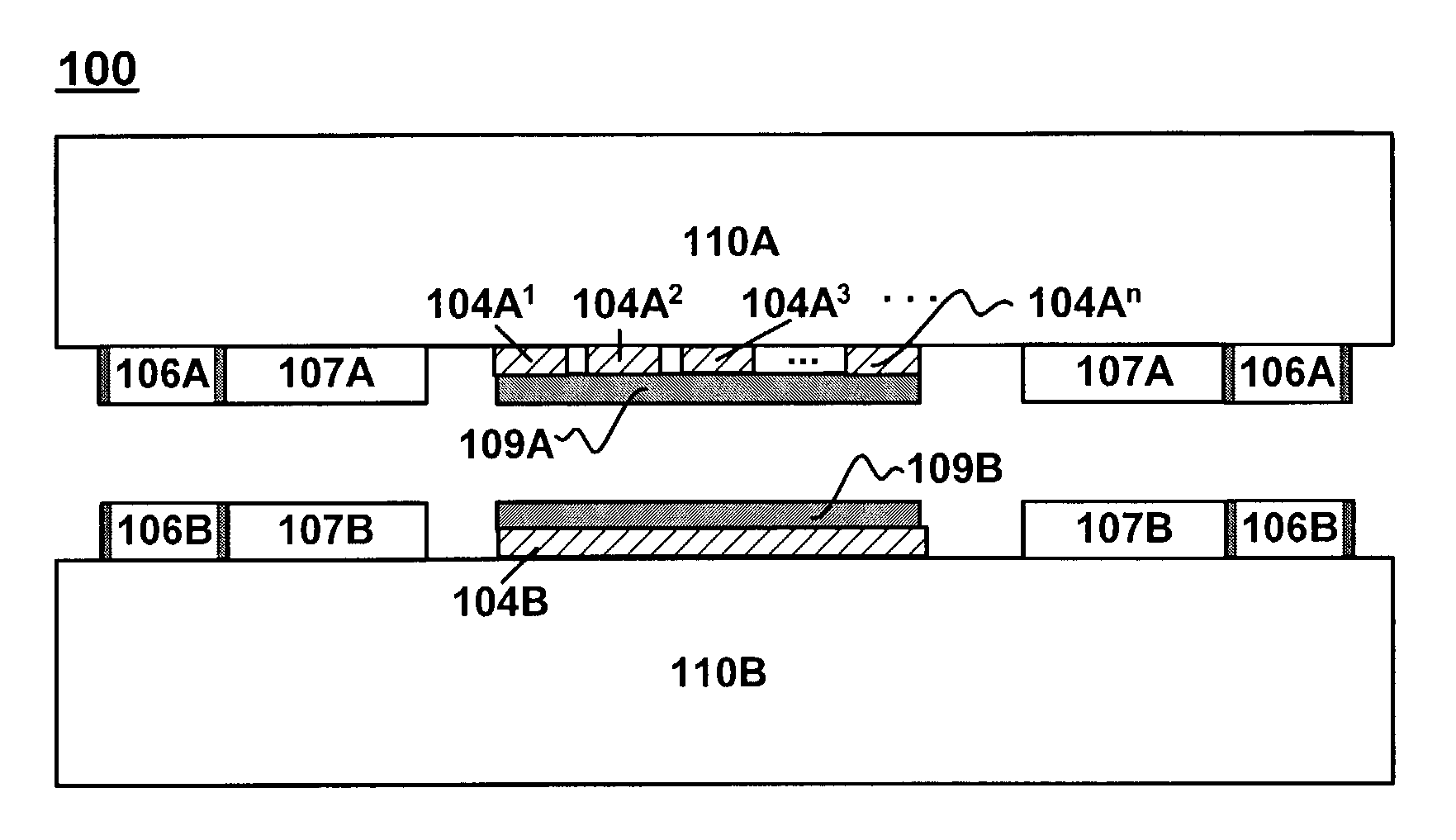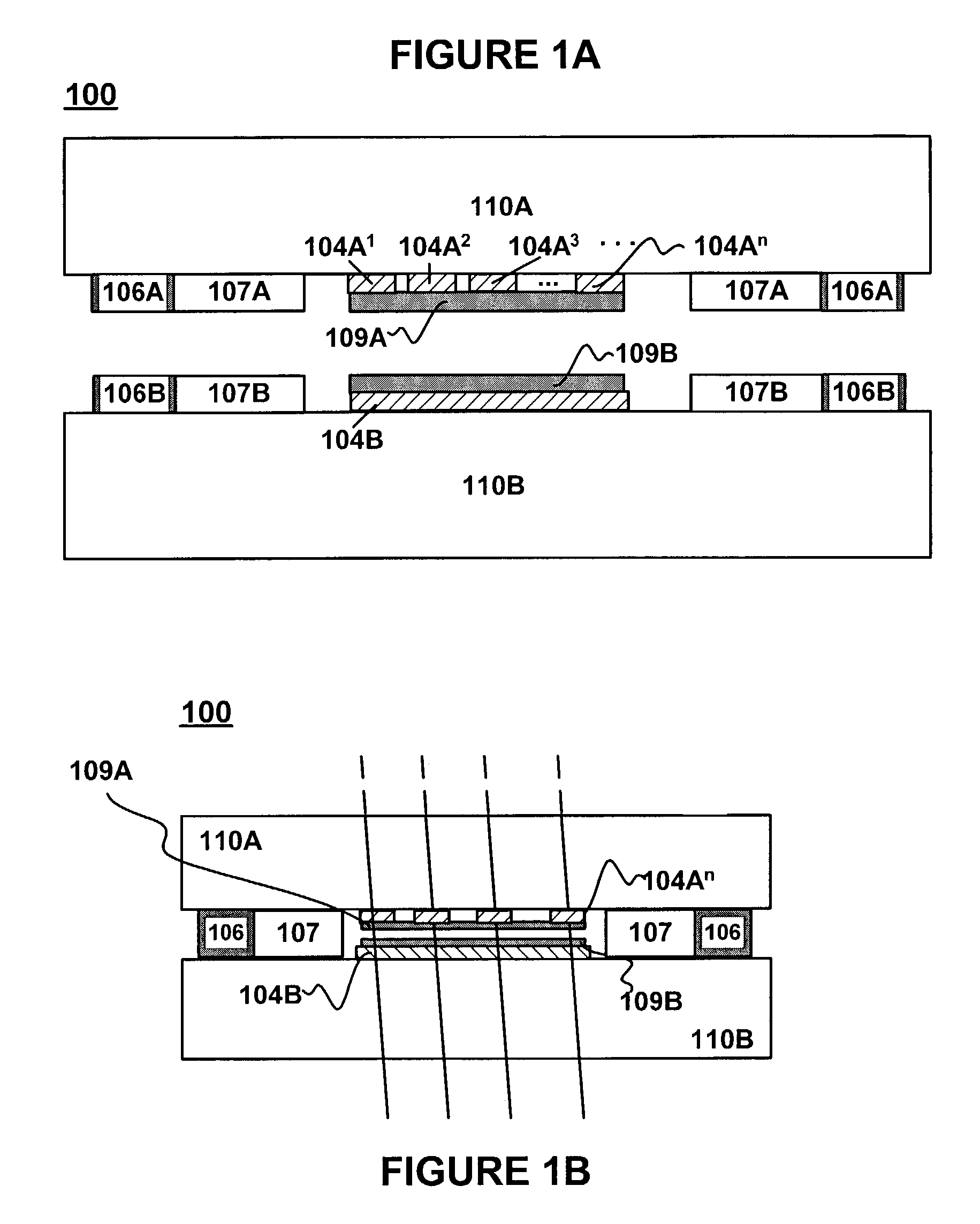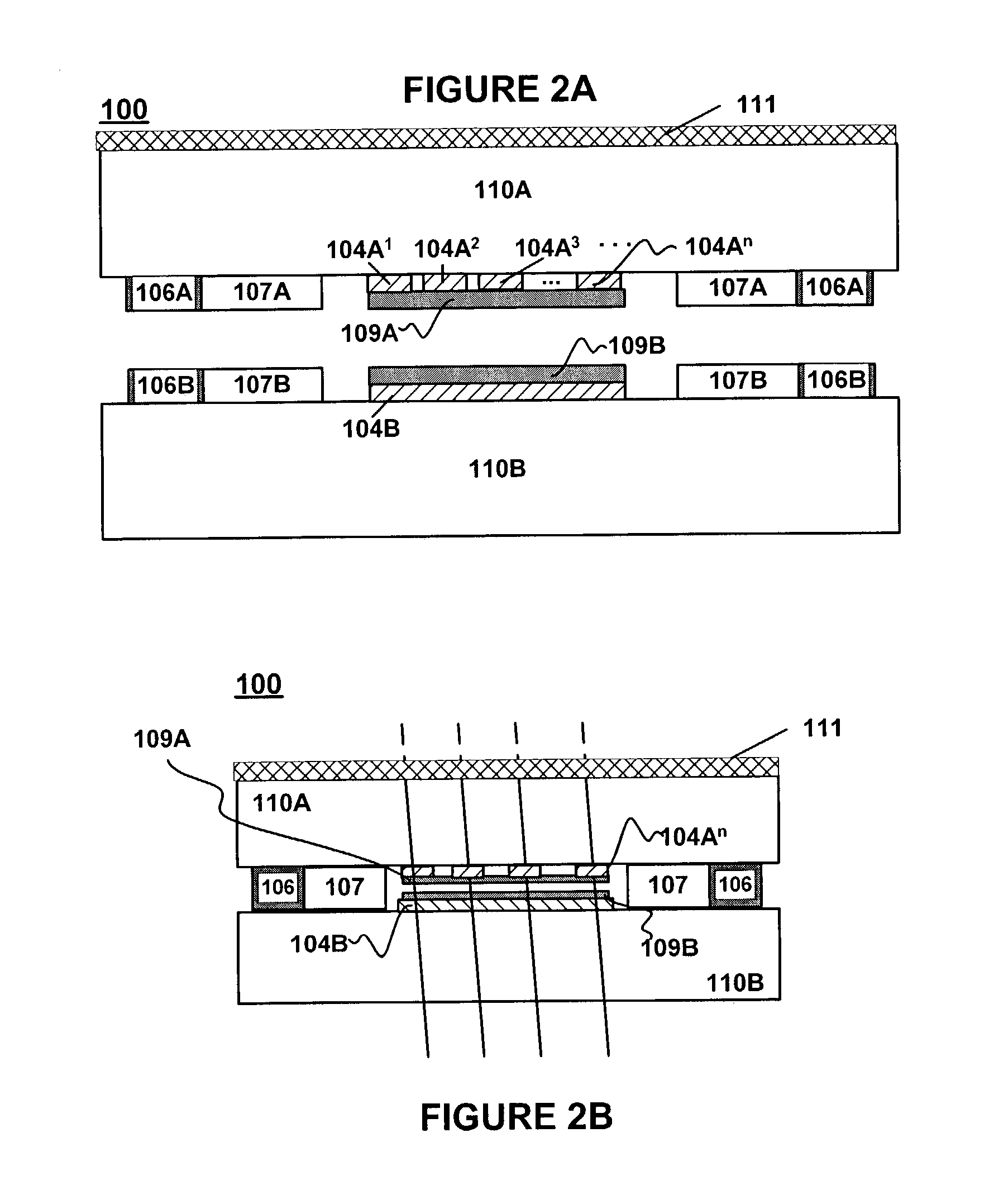Multi-pixel liquid crystal cell array
a liquid crystal cell array and multi-pixel technology, applied in static indicating devices, instruments, non-linear optics, etc., can solve the problems of low insertion loss, decreased optical performance, and inability to provide the same high performance of integrated structures, and achieve accurate control of cell gap thickness.
- Summary
- Abstract
- Description
- Claims
- Application Information
AI Technical Summary
Benefits of technology
Problems solved by technology
Method used
Image
Examples
first embodiment
[0061]the present invention is presented in FIGS. 1a and 1b, which shows a multi-pixel liquid crystal cell platform 100 having a first substrate 110A in opposition to a second substrate 110B. In this embodiment, the first substrate may contain an inner surface having a conductive electrode layer 104 patterned to form individual pixel locations 104A1 through 104An, liquid crystal alignment layer 109A, a metal gasket element layer 106A and spacer element layer 107A. The second substrate 110B contains an inner surface having a common a conductive electrode layer 104B spanning the pixels defined above, a liquid crystal alignment layer 104B, metal gasket element layer 106B and spacer element layer 107B. In this embodiment and all embodiments, is preferred to maintain a common electrode 104B across multiple pixels in the array since it may form a ground plane common to the array. However, it need be noted that within the scope of this invention it will be clear that a multi-pixel mask sim...
second embodiment
[0062]the present invention includes an integrated optical element 111 and is presented in FIGS. 2a and 2b, which shows a multi-pixel liquid crystal cell platform 100 having a first substrate 110A in opposition to a second substrate 110B wherein the first substrate contains a global integrated optical element 111 on one side of the substrate that performs an optical function across multiple pixel locations, a conductive electrode layer 104 patterned to form individual pixel locations 104A1 through 104An, a liquid crystal alignment layer 109A, metal gasket element layer 106A and spacer element layer 107A on the opposing side, and, the second substrate 110B containing a common conductive electrode layer 104B spanning the pixels defined above, a liquid crystal alignment layer 109B, metal gasket element layer 106B and a spacer element layer 107B.
[0063]A variation of the second embodiment of the present invention is presented in FIGS. 2c and 2d, which shows a multi-pixel liquid crystal c...
third embodiment
[0064]the present invention is presented in FIGS. 3a and 3b, which shows a multi-pixel liquid crystal cell platform 100 having a first substrate 110A in opposition to a second substrate 110B wherein the first substrate contains integrated optical elements 111n positioned at referential pixel locations, a conductive electrode layer 104 patterned to form individual pixel locations 104A1 through 104An, a liquid crystal alignment layer 109A, a metal gasket element layer 106A, and a spacer element layer 107A. In this embodiment, the second substrate 110B contains a common conductive electrode layer 104B spanning the pixels defined above, a liquid crystal alignment layer 104B, metal gasket element layer 106B, and a spacer element layer 107B.
[0065]A first variation of the third embodiment of the present invention is presented in FIGS. 3c and 3d, which shows a multi-pixel liquid crystal cell platform 100 having a first substrate 110A in opposition to a second substrate 110B wherein the firs...
PUM
| Property | Measurement | Unit |
|---|---|---|
| thick | aaaaa | aaaaa |
| rub angles | aaaaa | aaaaa |
| rub angles | aaaaa | aaaaa |
Abstract
Description
Claims
Application Information
 Login to View More
Login to View More - R&D
- Intellectual Property
- Life Sciences
- Materials
- Tech Scout
- Unparalleled Data Quality
- Higher Quality Content
- 60% Fewer Hallucinations
Browse by: Latest US Patents, China's latest patents, Technical Efficacy Thesaurus, Application Domain, Technology Topic, Popular Technical Reports.
© 2025 PatSnap. All rights reserved.Legal|Privacy policy|Modern Slavery Act Transparency Statement|Sitemap|About US| Contact US: help@patsnap.com



